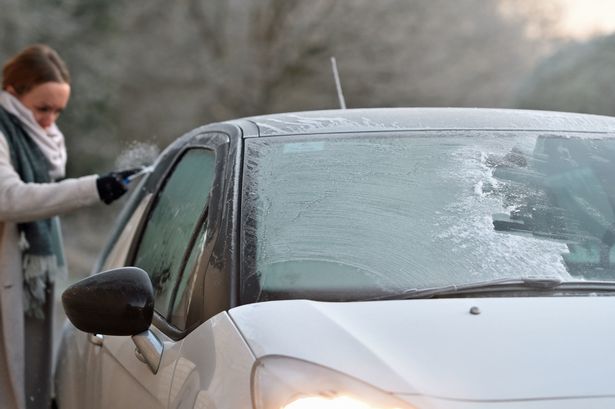The AA motoring experts reveals 10 ways to look after your vehicle in cold weather to avoid costly breakdowns

With some locations seeing snow falling at a rate of about 3cm per hour, it is important drivers are aware that cold weather conditions can cause costly damages and increase the chances of your vehicle breaking down.
With this in mind, Britain’s largest motoring organisation the AA has created a list of 10 ways to keep your car running smoothly in cold temperatures to avoid costly breakdowns.
Check your coolant level regularly
Engine coolant is a mix of water and antifreeze that cools your engine and stops it from overheating. It is, therefore, important to make sure your coolant level is topped up at the correct level. To do this, get your antifreeze concentration checked by a garage before the cold weather sets in.
Use a screen wash additive
Using undiluted additive can save your washer jets from freezing over this winter. If the pump runs without any fluid, it could blow a fuse or burn the screen wash motor out, leading to bigger, more expensive issues.
Check your wipers
Make sure to unstick your wipers from your windscreen before setting off on winter mornings, and do not leave them on automatic. Having the wipers on but not moving can damage the wipers themselves and the motor, leading to a blown fuse or burning the wiper motor out.
Clear snow off your car as soon as possible
The longer you leave snow to sit on your car, the harder it is to clear off when you need to use it. To save the hassle, clear it as soon as you can.
Defrost locks and handles
Handy household objects can help protect your car this winter. Where necessary, WD40 can be used on frozen locks and using Vaseline on the door seals will stop them from sticking. According to the AA, locks and alarms are the cause of 5% of all breakdowns in winter in the UK.
Don’t leave wet clothes in your car
The water from damp clothes will go into the air and make condensation even worse in your vehicle. On misty mornings you don’t need misty windows too.
Wait to open your windows
Let the windows warm up before opening them. Although removing the frost by lowing the windows is tempting, they may be frozen into the frame and then become detached from the mechanism.
Keep your car clean
Cleaning your car will remove the corrosive salt that has built up when driving. Avoid spraying the brake drums, as in the cold weather; they may become frozen, stopping you from setting off.
Move off carefully
Automatic parking brakes may not release so engage the foot brake when releasing the electronic brake, then ease off the pedal and drive off slowly.
Listen to your engine
Stop immediately if you hear any unusual noise from your engine, smell burning, or see smoke when you start your vehicle. The alternator or water pump may have frozen over and will only be damaged more if you continue to drive.
Sean Sidley, AA Patrol of the Year, commented:
“It is important drivers give their car a little TLC each morning in the colder months to avoid breakdowns and expensive repairs.
The most important thing is to keep an eye on your battery as a significant amount of winter breakdowns are caused by battery-related issues. To avoid this, take your car out for regular runs (of half an hour or so) to keep the battery charged. Batteries only last about 5 years, so if yours is nearing the end of its life, invest in a new one before winter.
Tyres are the second most common reason for call-outs in the winter so make sure you check your tyres before setting off and make sure your tread is deep enough. Winter tyres can be considered if you live in a location that would make them useful but there are many tires that can last all year round.
Maintaining your car, especially in the colder months, can save you both the time and stress of a breakdown and save you money from having to undertake emergency repairs.”






